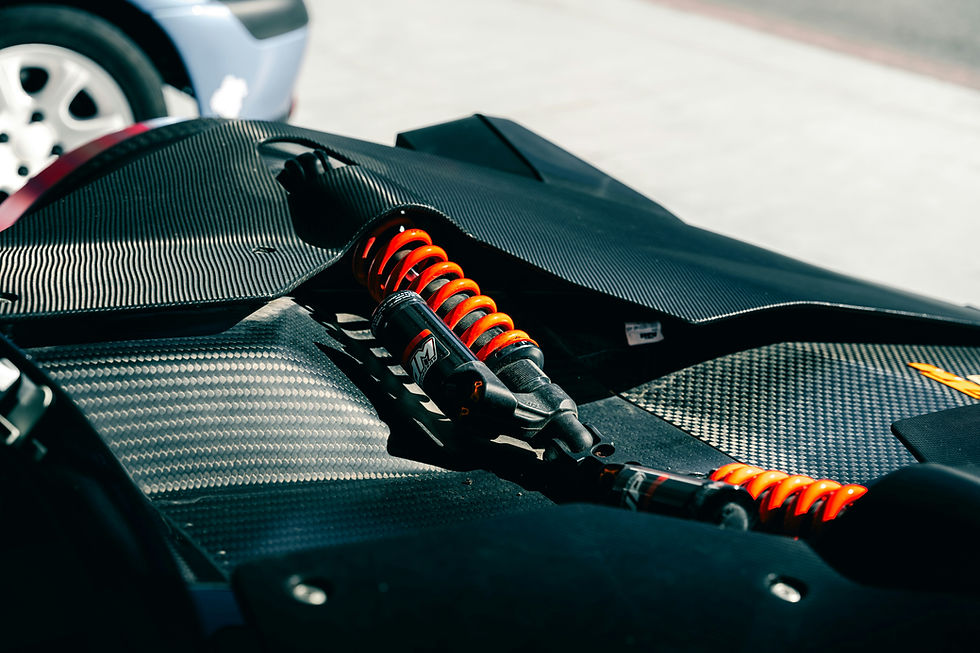Essential Safety Checks
- autosprintsg
- Dec 11, 2024
- 4 min read
Before hitting the road this holiday season, ensure that your vehicle is in good working condition with our safety checklist. Regularly conducting basic safety checks can help prevent accidents, reduce breakdowns, and ensure a smoother drive, all key players in getting you securely from one point to another this busy season.

Check Your Tires
As the only point of contact between your vehicle and the road, your tyres are a critical safety component. Ensuring that they are properly maintained reduces your stopping distances and keeps you protected from tyre blowouts.
Here’s how you can check that your tyres are in good condition:
Tyre Pressure: Use a tyre pressure gauge to ensure the pressure matches the manufacturer’s recommendation, which is usually found in the owner’s manual or on the driver-side door frame.
Tread Depth: With a tread depth gauge if you have one, ensure the tread depth is above the legal minimum (1.6mm). If you do not possess a tread depth gauge, check if the wear indicators are visible.
Visible Damage: Inspect the tires for cuts, cracks, or bulges that could indicate damage.
Properly inflated and maintained tires improve fuel efficiency, handling, and safety, so ensure that your tyres are in good shape before heading out to the roads!
Inspect the Brakes
One of the most important components of your car’s safety system is its brakes. Faulty brakes can lead to accidents, and is detrimental to both yourself and others on the roads.
When checking your braking system, look out for:
Brake Pads: A telltale sign that your brake pads have been worn down is a squeaking or grinding sound when you brake. Listen out for this, and let your mechanic switch them out for you if they are less than 3mm in thickness.
Brake Fluid: Check the fluid level in the brake fluid reservoir. Low levels may indicate a leak or worn brake components.
Responsiveness: Ensure the brakes engage smoothly and don’t feel spongy or overly firm.
Keeping your brakes in good shape is important, as properly functioning brakes ensure you can stop quickly and safely when needed.
Test the Lights
Your vehicle’s lights are a vital component for visibility on the roads. Having faulty lights can increase the risk of accidents, especially at night or during adverse weather conditions.
What to Check:
Headlights: Ensure both high and low beams are working.
Brake Lights: Test that all brake lights illuminate when the pedal is pressed.
Turn Signals and Hazard Lights: Confirm they’re blinking correctly.
Fog and Reverse Lights: Verify these are functional, especially for bad weather or parking manoeuvres.
Properly functioning lights help you see clearly and allow others to see you, especially while travelling in darker conditions during the night. Taking a second to check if your lights are properly functioning is an important step in ensuring the safety of yourself and those around you.
Check Vehicle Fluid Levels
Your vehicle relies on several fluids for a smooth and efficient operation. Dirty or low levels of fluids can lead to mechanical failures, and should be avoided as much as possible.
A Checklist:
Engine Oil: This provides lubrication for your engine's moving parts and reduces friction. Use a dipstick to check the oil level and condition.
Coolant: To prevent overheating, ensure the coolant reservoir is at the correct level
Windshield Washer Fluid: Maintains visibility of the windshield, top it up as required.
Power Steering Fluid: A hydraulic fluid that your steering system uses, it ensures smooth steering of the wheel.
Transmission Fluid: Check its level and colour; it should be clean and reddish.
Proper fluid levels reduce the wear and tear on your vehicle and prevent breakdowns, so be sure to keep an eye on them.
Examine the Battery
A dead battery can leave you stranded on the side of the road, especially if it hasn’t been checked in a while. Regular inspections can help you avoid unexpected issues.
What to look for when checking your battery:
Connections: Ensure the terminals are clean, tight, and free from corrosion.
Charge: Use a multimeter to check the battery voltage (a fully charged battery should read around 12.6 volts when the engine is off).
Age: If your battery is over three years old, consider having it tested by a professional.
A well-maintained battery ensures reliable starts and supports the electrical systems in your vehicle. Keep an eye on its levels and schedule a regular replacement every 4-5 years to prevent unnecessary breakdowns.
Look Under the Car for Leaks
Fluid leaks can indicate serious mechanical issues that may lead to breakdowns or unsafe driving conditions.
What to look out for:
Puddles or drips of oil, coolant, brake fluid, or transmission fluid under your car.
Unusual smells
Warning lights on the dashboard.
Detecting any leaks early can prevent more significant mechanical failures and costly repairs down the road, and ensure that your drive is smooth and secure.
Other Components to check:
Wipers and Windshield: Clear visibility is crucial for safe driving. Worn-out wipers or a dirty windshield can obscure your vision, especially in rain or at night.
Horn: test your horn to ensure it is loud and clear, a non-functioning horn can compromise safety in situations where you need to alert others.
Mirrors: properly adjust your mirrors so that you have a clear view of your surroundings. Minimising blind spots can improve your overall safety.
Seatbelts: Inspect for wear, ensure they retract properly, and verify that the locking mechanism works. Your seatbelts are the first line of defence in an accident.
Taking a few minutes to perform these safety checks can save you from potential mishaps and ensure a stress-free journey. While some of these tasks are easy to do yourself, don’t hesitate to consult a professional for more complex inspections or repairs. Remember, a safe car means a safe driver, passengers, and everyone else on the road. Drive safe!




Comments